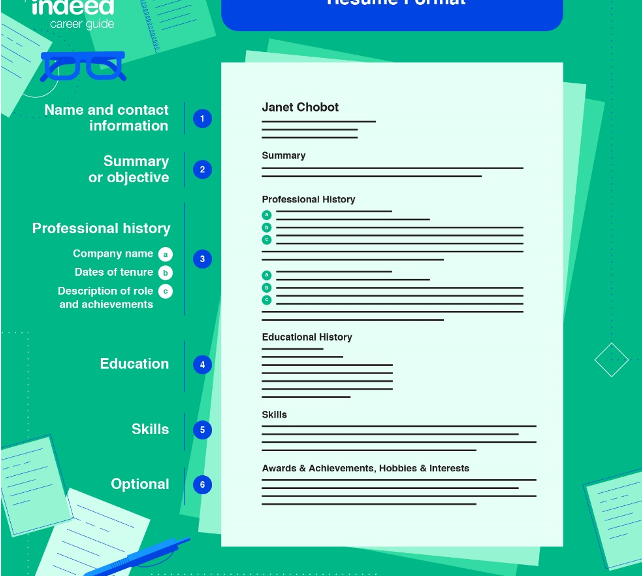
The formatting of your resume is incredibly important. Making sure your resume looks clean, professional and has an intuitive flow to it could make or break your job chances. The easier it is for a hiring manager to comprehend your work experience, the sooner than can get to know you as a human being. Here are a few tips when it comes to formatting your resume.
According to zety.com, there are 10 steps that should be followed when it comes to format of a resume.
1. Set one-inch margins
2. Pick an 11 or 12 pt font
3. Create a resume header for your contact details
4. Divide your resumé into sections, such as contact information, resume summary, work experience, education, and skills.
5. Use bullet points to talk about past jobs.
6. Be consistent with formatting!
7. Use single or 1.15 line spacing.
8. Add an extra space before and after each section heading.
9. Make your resume as long as it need to be.
10. Don’t use photos on your resume.
These are pretty good guideline to get started on a crisp and clean resume. Now that we have the basic formatting completed, we get to decide what style our resume should be. The most common and most used style is the Reverse-Chronological format. This format focuses on work experience. The idea is to start with your most recent job which could be your current position, and then list the rest of your experience after that. So if you worked at Company A from 2019-present and worked at Company B from 2017-2019, you would list Company A followed by Company B.

Content
Okay so now that we know how to format our resume, we should focus on the content, which is arguably the most important part of a resume. According to indeed.com, a resume should be unique to you! No one else has your exact education, experience or skills, so using your resume to showcase that uniqueness is key. To start, a resume should have your name and contact information, usually at the top of the page. It is important to include this information at the top so the hiring manager knows who it is they’re reading about. That sounds a little like a “well duh” moment but a resume can be daunting so some wouldn’t know where to start!
When it comes to inclusion of experience and skills, indeed.com suggests carefully reading through the initial job posting. Look for keywords that show what an employer is searching for and include those words in your resume where relevant. Adding descriptions to your work experience using those keywords and also using active language will help make your resume stand out. Use words such as “achieved”, “earned”, “completed”, “inspire” or “delegate”. These words are power words that express more than just a description of job duties. If you’re having trouble try looking at resume examples from your industry for inspiration before writing. This may help you add or take away information.
Finally, one of the most important aspects of writing a resume is editing! Be sure to proofread and even have a trusted family member or friend read over it for you too! What may sound right to you could come across differently to others so having an unbiased third party read over it for you is often helpful.
Writing a resume may seem daunting, but we hope that these tips help conquer that task. Remember to put the most important information first, keep it simple and clean, and don’t forget you are unique! Let that shine through!
Links if you would like to read more:
Resume power words from Indeed:
